So, you are now in Florence and, well, it’s Italy right? Time to get some tasty food to brag about with friends back home! In Florence you can find almost any kind of italian dish (did anyone say “Pizza”?), but here we would like to present you some typical tuscan ones and let you have a truly unique experience.
Following the italian meal convention we will start with some appetisers, or antipasti, in Italian.
Bruschetta is an antipasto from Italy consisting of grilled bread rubbed with garlic and topped with olive oil and salt. Variations may include toppings of tomato, vegetables, beans, cured meat, or cheese. A popular dish is bruschetta with tomatoes. In Tuscany it is called fettunta and it is usually served only with oil, without additional toppings.
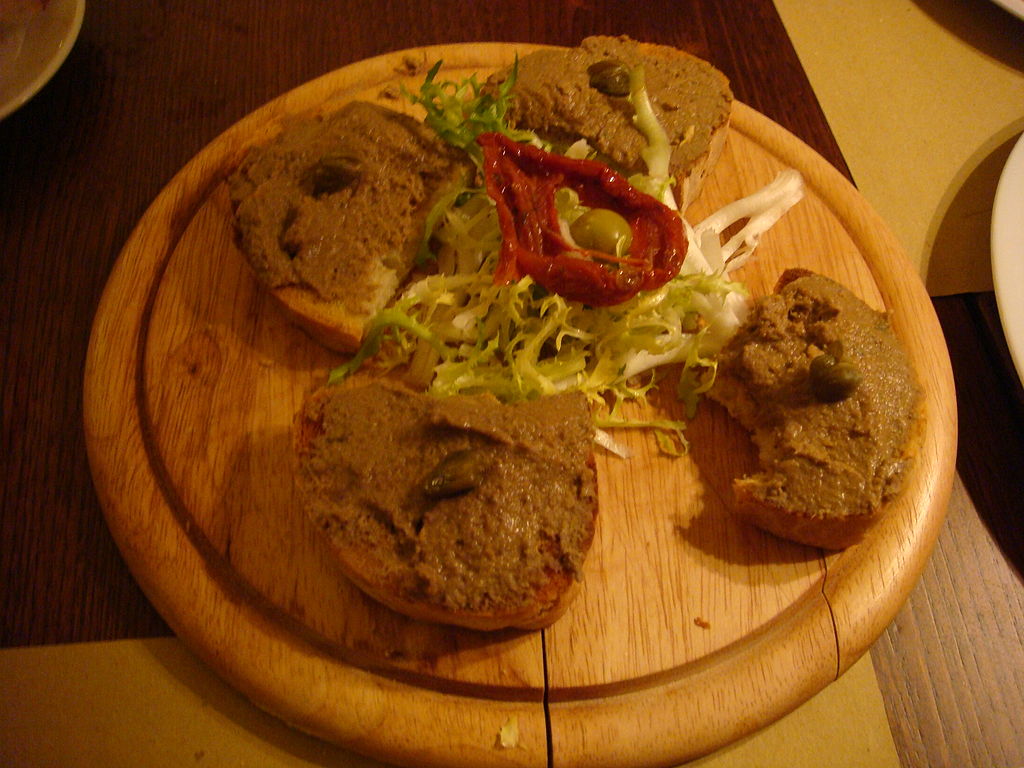
By Schellack (Public domain), via Wikimedia Commons
Crostini are another bread-based Italian appetiser. They consist of small slices of grilled or toasted bread and toppings. The toppings may include a variety of different cheeses, meats, and vegetables, or may be presented more simply with a brush of olive oil and herbs or a sauce. Typical toppings in Tuscany include local hams and chicken liver pate (paté di fegatini).
We move on now to soups (or “first course”). Tuscany is known for vegetable soups, but this does not imply you won’t be able to find wonderful pasta (e.g. Pappardelle coi funghi, with mushrooms, or col cinghiale, with boar meat).
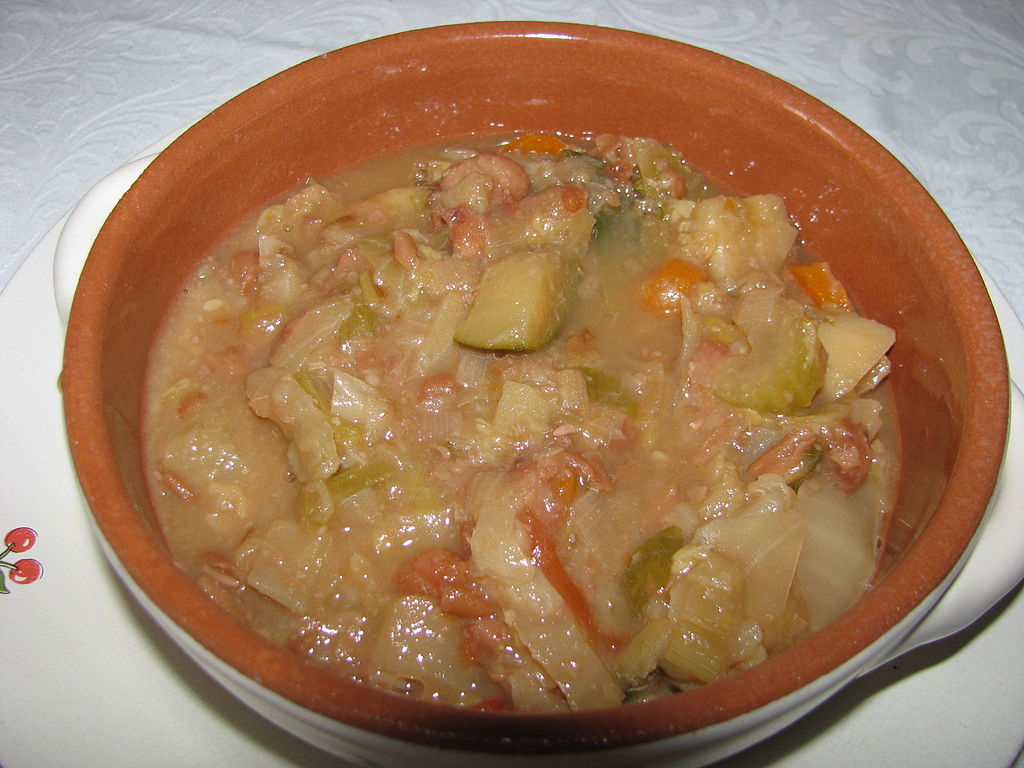
By Ithunn (CC BY-SA 3.0), via Wikimedia Commons
Ribollita is a famous Tuscan bread soup, a hearty potage made with bread and vegetables. There are many variations but the main ingredients always include leftover bread, cannellini beans, Lacinato kale, cabbage, and inexpensive vegetables such as carrot, beans, chard, celery, potatoes and onion. Its name literally means "reboiled", hinting at the origin of the recipe as a way of reusing leftovers.
Pappa al pomodoro is a thick Tuscan bread soup typically prepared with fresh tomatoes, bread, olive oil, garlic, basil, and various other fresh ingredients. It is usually made with stale or leftover bread, and can be served hot, room temperature, or chilled, mostly depending on the season. Pomodoro means "tomato" in Italian; the dish translates to English as "mush of tomato".
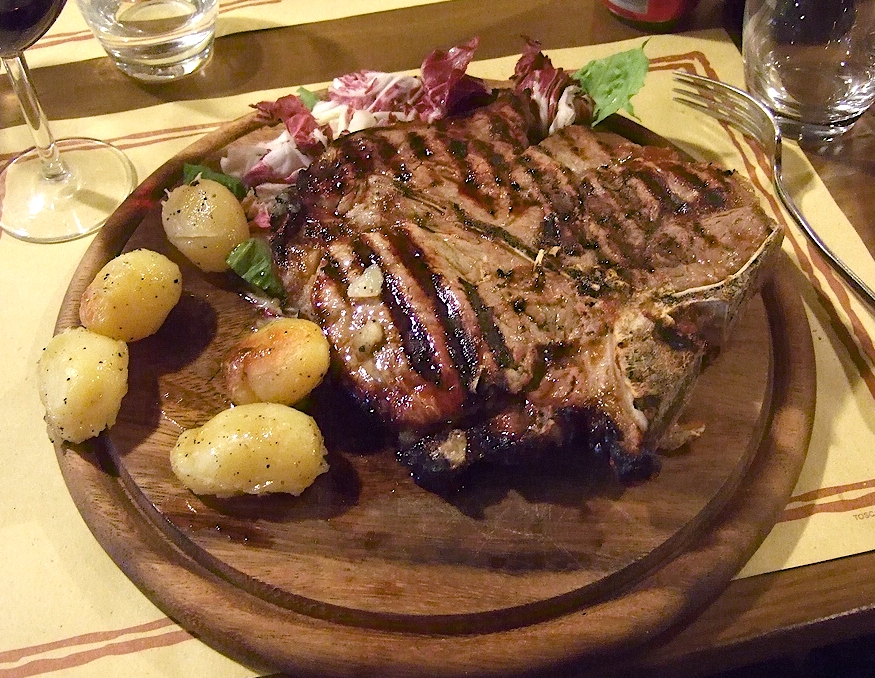
By mike packard (CC BY-SA 2.0), via Wikimedia Commons
After soups, it is time for the main course. And in Florence, well, this means Bistecca alla fiorentina, or 'beefsteak Florentine style' (sorry, vegetarians, but don’t worry, you’ll find several alternatives). It consists of a T-bone steak traditionally sourced from either the Chianina or Maremmana breeds of cattle. Following the traditional recipe, the steak is grilled over a wood or charcoal fire, seasoned with salt, sometimes with black pepper, and olive oil, applied immediately after the meat is retired from the heat. Thickly cut and very large, Fiorentine are often shared between two or more persons, and traditionally served very rare, and accompanied by red wine, usually Chianti. Be aware that real Fiorentina might be quite expensive. Other beef-based options include Tagliata, which is a less noble cut of meat than T-bone, but is prepared in a similar way and served already cut (hence the name Tagliata), topped with Parmigiano, rocket, mushrooms or truffles.
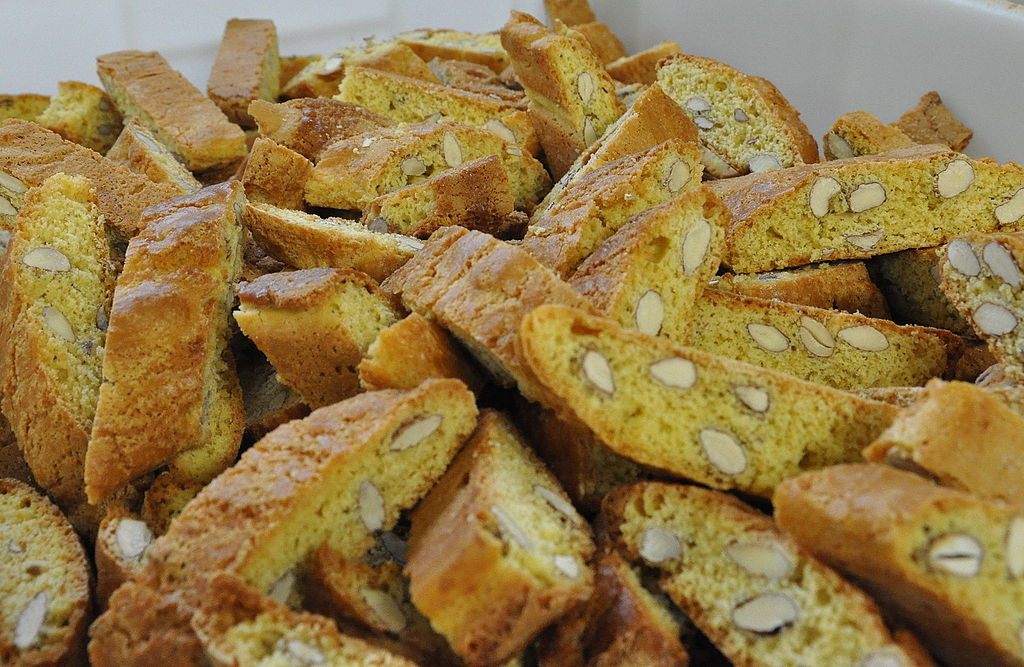
By Matteo Bertini (CC BY-SA 2.0), via Wikimedia Commons
As for dessert don’t forget to try Cantuccini and Vinsanto, crunchy almond biscuits to be dipped in a sweet dessert wine (Vinsanto).
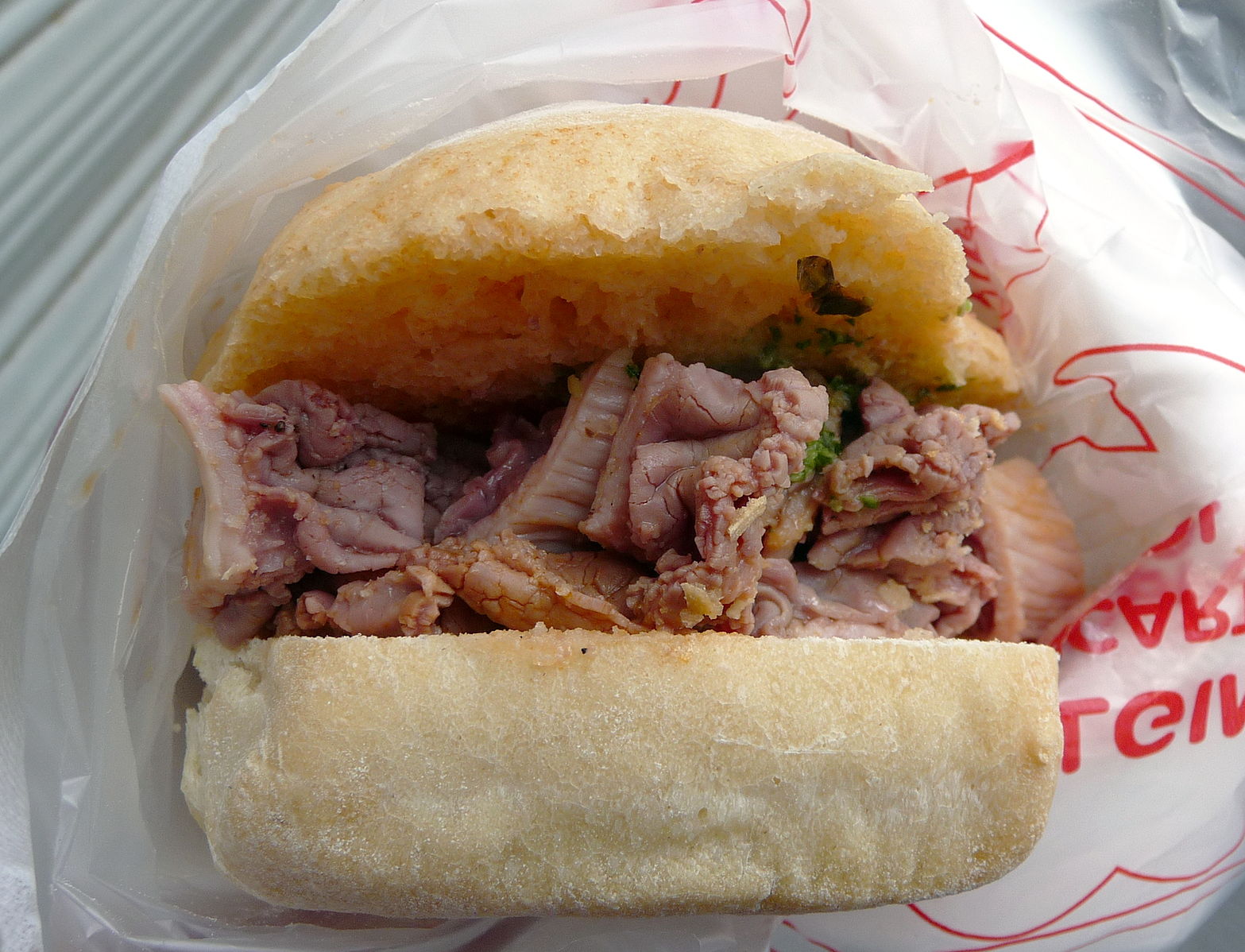
By Lucarelli (CC BY-SA 3.0), via Wikimedia Commons
If you don’t want to sit down, there are several options for a great street food experience. The most typical (though it might sound strange) is Panino col lampredotto. Lampredotto is a typical Florentine dish, made from the fourth and final stomach of a cow, the abomasum, chopped, slow-cooked in a vegetable broth, seasoned with herbs. "Lampredotto" is derived from the Italian word for lamprey eels, lampreda, as the tripe resembles a lamprey in shape and color. Panino col lampredotto is just a sandwich with lampredotto, often topped with a spicy sauce or a green sauce (salsa verde).
Finally, do not leave Italy without trying gelato (or ice cream). We are not sure yet which parlor has the best one in Florence, but we will take it as our host duty to try as many as possible during EGMO week, in order to tell you our own preferences.
One last piece of advice: while many places offer a diverse and rich choice of foods, you might have a difficult time finding something if you have special dietary needs for health or religious reasons (especially in smaller restaurants and street food vendors), so be sure to ask (e.g. your guide) for help when eating outside of the hotel.
(Thanks to en.wikipedia.org for providing part of the text above. Turns out it is really hard to properly describe italian food for non italians.)





